Mga Bahagi ng Komunikasyon Injection Mould
In the communication industry, we often need to produce various plastik na plastik mga bahagi, and this is where communication injection molds shine. These molds are used in conjunction with iniksyon paghubog mga makina, which melt plastik na plastik particles through heating and pressure, and then inject the melted plastic into the magkaroon ng amag lukab.
Usually, komunikasyon iniksyon molds are made of high-quality steel or aluminum, which can produce precise and durable communication specific components. They can easily handle small connectors and adapters, as well as larger cable components, mga antenna, at elektroniko enclosures.
The process of manufacturing komunikasyon iniksyon molds nagsisimula sa disenyo na tinulungan ng computer (CAD) software. With the help of this software, manufacturers can create 3D models of the communication components they want to produce and design molds that can manufacture the components. Once the design is completed, the mold is manufactured through CNC machining and other professional techniques.
One of the main advantages of using communication injection molds is their ability to quickly and efficiently mass produce plastic parts. Pag iiniksyon paghubog machines can produce thousands of parts per hour, making them ideal for high-volume production operations. This is particularly important in the communication industry as manufacturers constantly introduce new products and update existing ones.
Another advantage is that communication injection molds can produce high-quality, high-precision, and highly consistent components. This is crucial in the communication industry as components must meet strict performance and security standards. Injection molding ensures that manufacturers can produce components with completely consistent size, hugis, at kalidad, ensuring their stable performance over long-term use.
Although communication injection molds have many advantages, their initial investment is indeed significant. The cost of manufacturing molds can be high, and it usually takes a long time from design to mold readiness. Gayunpaman, compared to traditional manufacturing methods, the benefits of using communication injection molds far outweigh the costs, as they enable manufacturers to produce high-quality components at a faster speed and lower cost.
In short, communication injection molds are indispensable tools in the communication industry. Their ability to quickly and efficiently manufacture high-quality plastic parts has fundamentally changed the manufacturing process, making it more accessible and affordable for consumers. With the continuous development and expansion of the communication industry, communication injection molds will continue to be an important tool for manufacturers to stand undefeated in the fiercely competitive market.
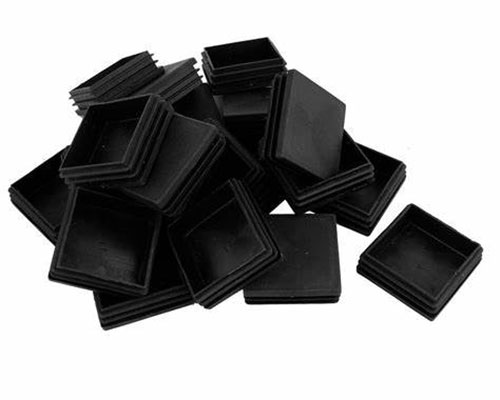
Mga Bahagi ng Komunikasyon Magkaroon ng amag
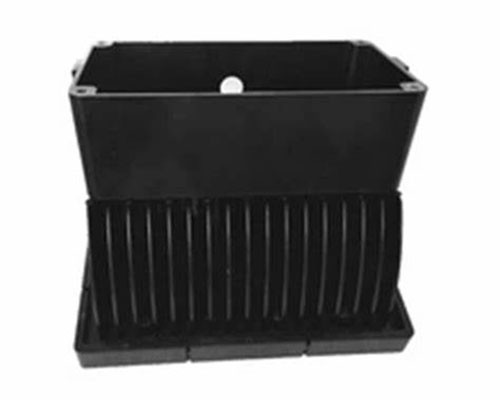
Mga Bahagi ng Komunikasyon Magkaroon ng amag
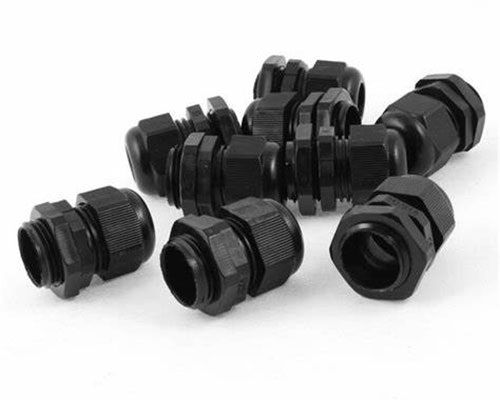
Mga Bahagi ng Komunikasyon Magkaroon ng amag
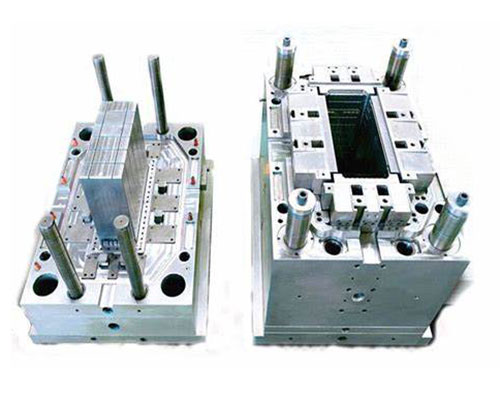
Mga Bahagi ng Komunikasyon Magkaroon ng amag
Mga Bahagi ng Komunikasyon Paggawa ng Amag, Plastic Injection Molding Serbisyo
Maging mahusay sa pag optimize ng istraktura ng produkto at lubos na mabawasan ang gastos ng paggawa ng amag iniksyon paghubog
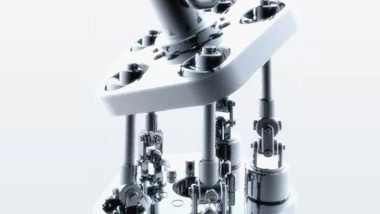
Disenyo ng amag
Hitsura at disenyo ng istruktura
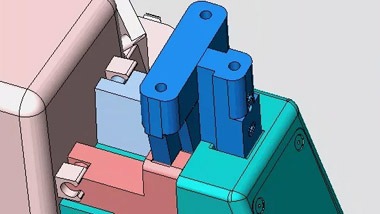
Paggawa ng amag
Disenyo, Kumpirmasyon ng DFM
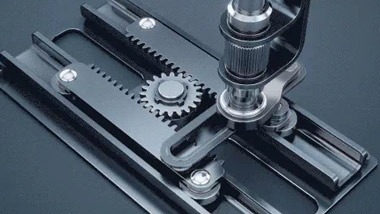
Produksyon ng Produkto
Mga Inangkat, mataas na bilis mga kagamitan

Pagtitipon ng Produkto
Mga papasok na materyales, inspeksyon at pagtitipon
Ang mga iniksyon na molds ay ginagamit sa industriya ng Komunikasyon
Mga molds ng iniksyon are indispensable in the communication industry, playing a pivotal role in the production of plastic components that power everything from smartphones and laptops to routers and modems. The injection molding process involves melting plastic pellets and injecting the molten plastic into a mold cavity under high pressure. Once cooled and solidified, ang amag ay bubukas, releasing the finished part.
Key Benefits of Injection Molding in the Communication Industry:
- High-Quality, Precise Components: Injection molding allows for the rapid production of high-quality, precise components. Machines can produce thousands of identical parts per hour, making it ideal for high-volume production runs—a necessity in an industry where innovation is constant.
- Consistency and Accuracy: Small variations can significantly impact product performance in the communication sector. Injection molds ensure components meet strict performance and safety standards with high accuracy and consistency.
- Complex Shapes and Designs: The ability to create intricate designs is crucial. Communication devices must be both functional and aesthetically pleasing, and injection molds enable the creation of complex shapes that meet these dual needs.
- Versatility: Injection molds can produce components with varying properties such as hardness, kakayahang umangkop, at paglaban sa kemikal. This versatility ensures components are suitable for diverse mga aplikasyon, mula sa mabatong panlabas mga kagamitan sa maselan na elektroniko mga aparato.
Applications of Injection Molds in the Communication Industry:
- Connectors and Adapters: Essential for ensuring reliable data transfer and power distribution.
- Housings: Protect internal components while providing a sleek exterior design.
- Device Casings: Offer protection and contribute to the device's overall appearance and usability.
Challenges of Injection Molding:
- High Initial Costs: Creating injection molds, especially for complex designs, can be costly. There's also a significant lead time before molds are ready for use.
- Environmental Impact: The process generates waste plastic, which can be expensive to dispose of and harmful to the environment.
Future Prospects:
Despite the challenges, injection molding remains a cornerstone of the communication industry. As technology advances, improvements in mold design, material efficiency, and recycling methods are likely to enhance the benefits while mitigating some of the drawbacks. Innovations like 3D pag print and advancements in materials science could further revolutionize the manufacturing process, enabling even greater precision and sustainability.
Sa pagtatapos, iniksyon molds ay isang kritikal na tool sa industriya ng komunikasyon, enabling the mass production of high-quality, precise components essential for modern communication devices. As the industry continues to evolve, injection molding technology will remain integral to driving innovation and shaping the future of communication technology.
FAQ Tungkol sa Komunikasyon Produkto Mold
Ang isang produkto ng komunikasyon magkaroon ng amag ay isang dalubhasang tool na ginagamit sa proseso ng pagmamanupaktura ng mga produkto ng komunikasyon. Ito ay isang uri ng amag na partikular na idinisenyo upang lumikha ng iba't ibang mga bahagi o casings na ginagamit sa mga aparato at kagamitan sa komunikasyon. Ang mga molds ay ginagamit upang makabuo ng tumpak at pare pareho ang mga bahagi na mahalaga para sa pag andar at hitsura ng mga produkto ng komunikasyon.
Ang mga molds ng produkto ng komunikasyon ay maaaring lumikha ng isang malawak na hanay ng mga bahagi at casings para sa iba't ibang mga aparato na ginagamit sa teknolohiya ng komunikasyon. Ang ilang mga halimbawa ng mga produkto ng komunikasyon na maaaring ginawa gamit ang mga molds na ito ay kinabibilangan ng:
Mobile Phone Casings: Ang mga molds ng produkto ng komunikasyon ay ginagamit upang lumikha ng mga panlabas na casings ng mga mobile phone, pagbibigay ng proteksyon at isang biswal na kaakit akit na disenyo.
Mga Smartphone at Tablet: Ang mga molds ay ginagamit upang gumawa ng mga bahagi at casings para sa mga smartphone at tablet, pagtiyak ng tumpak na akma para sa iba't ibang mga elektronikong bahagi.
Mga Pabahay ng Kagamitan sa Komunikasyon: Ang mga molds ay utilized upang makabuo ng mga housings at enclosures para sa mga aparato ng komunikasyon tulad ng mga router, mga modem, at mga switch ng network.
Walkie-Talkies at dalawang-panig na radyo: Ang mga molds ng produkto ng komunikasyon ay maaaring lumikha ng mga casings at mga bahagi para sa mga handheld na aparato ng komunikasyon.
Mga Wireless Headset at Earbuds: Ang mga molds ay ginagamit upang gumawa ng mga bahagi at casings para sa mga wireless na accessory ng komunikasyon.
Kagamitan sa Komunikasyon ng Satellite: Ang mga molds ay ginagamit upang lumikha ng mga bahagi at casings para sa mga aparatong satellite komunikasyon.
Kagamitan sa Network ng Komunikasyon: Ang mga molds ay maaaring gamitin upang gumawa ng mga bahagi para sa mga kagamitan sa network ng komunikasyon, tulad ng antennas at connectors.
RFID Tags at Mga Mambabasa: Ang mga molds ng produkto ng komunikasyon ay ginagamit upang makabuo ng mga bahagi at casings para sa RFID (Pagtukoy sa Dalas ng Radyo) mga tag at mga mambabasa.
Mga Kagamitan sa Telecommunication: Ang mga molds ay ginagamit upang lumikha ng mga bahagi at casings para sa iba't ibang mga kagamitan sa telecommunication, kasama na ang mga switch at base station.
Mga Gadget sa Komunikasyon: Ang mga molds ng produkto ng komunikasyon ay maaaring lumikha ng mga casings at mga bahagi para sa iba't ibang mga gadget at aparato ng komunikasyon.
Ang mga bahagi at casings na ginawa gamit ang komunikasyon produkto molds ay mahalaga para sa tamang pag andar at aesthetics ng mga produkto ng komunikasyon. Tinitiyak ng mga molds na ito na ang mga bahagi ay manufactured na may katumpakan at pagkakapare pareho, pagtugon sa mahigpit na pamantayan ng kalidad ng industriya. Ang kakayahang ipasadya ang mga molds ng produkto ng komunikasyon ay nagbibigay daan sa mga tagagawa upang lumikha ng mga natatanging disenyo at iakma ang kanilang mga produkto sa mga tiyak na kinakailangan sa teknolohiya ng komunikasyon.
Ang proseso ng pagmamanupaktura ng produkto ng komunikasyon ng amag ay nagsasangkot ng ilang mga hakbang upang magdisenyo, lumikha ng, at gumawa ng mga molds na ginagamit para sa pagmamanupaktura ng komunikasyon produkto bahagi at casings. Ang proseso ay karaniwang kasama ang mga sumusunod na yugto:
Disenyo ng Produkto: Ang unang hakbang ay upang bumuo ng disenyo para sa komunikasyon produkto component o casing. Ang disenyong ito ay karaniwang nilikha gamit ang Disenyong Tinulungan ng Computer (CAD) software, na nagpapahintulot para sa tumpak na mga sukat at mga pagtutukoy.
disenyo ng amag: Batay sa disenyo ng produkto, ang disenyo ng amag ay nilikha. Ang disenyo ng amag ay kinabibilangan ng hugis at mga sukat ng lukab ng amag, sistema ng runner, gating, mekanismo ng pagpapaalis, paglamig ng mga channel, at anumang iba pang mga kinakailangang tampok.
Pagpili ng Materyal: Ang angkop na materyal para sa amag ay pinili batay sa mga kadahilanan tulad ng dami ng produksyon, uri ng produkto ng komunikasyon, at kinakailangan ang tibay. Ang mga karaniwang materyales sa amag ay kinabibilangan ng bakal at aluminyo.
Paggawa ng amag: Kapag natapos na ang disenyo ng amag, nagsisimula ang proseso ng paggawa. Para sa mga metal molds, CNC machining o iba pang mga pamamaraan ng katumpakan machining ay ginagamit upang lumikha ng mga bahagi ng amag na may mataas na katumpakan.
Paggamot ng Heat (Para sa Steel Molds): Para sa mga bakal na molds, Ang heat treatment ay madalas na inilalapat upang mapabuti ang katigasan at katigasan ng amag, paggawa ng mga ito mas lumalaban sa wear at pagpapapangit sa panahon ng proseso ng iniksyon paghubog.
Assembly: Ang iba't ibang mga bahagi ng amag ay pinagsama upang lumikha ng kumpletong istraktura ng amag, pati na ang amag lukab, sistema ng runner, at mga channel ng paglamig.
Pagsusuri ng amag at mga pagsasaayos: Pagkatapos ng pagtitipon, ang amag ay sumasailalim sa pagsubok upang matiyak na ito ay gumagana tulad ng inilaan. Maaaring gawin ang mga pagsasaayos upang ma optimize ang pagganap ng amag at kalidad ng produkto.
Proseso ng paghubog ng iniksyon: Sa sandaling ang komunikasyon produkto magkaroon ng amag ay handa na, Ito ay ginagamit sa proseso ng iniksyon paghubog upang lumikha ng aktwal na mga bahagi ng produkto ng komunikasyon o casings. Ito ay nagsasangkot ng pag iiniksyon ng natunaw na materyal, tulad ng plastic, sa lukab ng amag sa ilalim ng mataas na presyon.
Paglamig at Solidification: Ang tinunaw na materyal ay pinapayagan na palamig at patatagin sa loob ng lukab ng amag. Ang proseso ng paglamig ay pinamamahalaan ng mga channel ng paglamig sa hulma upang makamit ang tamang bahagi ng solidification.
Pagpapaalis: Pagkatapos ng solidification, ang amag ay bubukas, at ang tapos na komunikasyon produkto component o casing ay ejected mula sa amag gamit ang isang ejection mekanismo.
Pagtatapos at Kontrol sa Kalidad: Ang molded komunikasyon produkto bahagi o casings sumailalim sa anumang kinakailangang mga proseso ng pagtatapos, tulad ng pagputol o paggamot sa ibabaw. Ang mga hakbang sa kontrol sa kalidad ay ipinatupad upang matiyak na ang mga bahagi ay nakakatugon sa mga kinakailangang pagtutukoy at pamantayan.
Pagpapanatili ng amag: Ang regular na pagpapanatili ng hulma ng produkto ng komunikasyon ay mahalaga upang matiyak ang panghabang buhay at pinakamainam na pagganap nito sa buong kahabaan ng buhay nito.
Ang proseso ng pagmamanupaktura ng produkto ng komunikasyon ng amag ay nangangailangan ng katumpakan at pansin sa detalye upang makabuo ng mataas na kalidad na mga hulma na nagpapagana ng mahusay at pare pareho ang produksyon ng mga bahagi ng produkto ng komunikasyon at casings. Tamang disenyo ng amag, pagpili ng materyal, at mga pamamaraan ng paggawa ay kritikal sa pagkamit ng maaasahan at cost-effective na pagmamanupaktura ng amag para sa industriya ng komunikasyon.
Komunikasyon produkto molds ay maaaring gamitin upang makabuo ng isang malawak na hanay ng mga produkto ng komunikasyon, kabilang ang iba't ibang mga aparato at mga bahagi na ginagamit sa mga industriya ng telekomunikasyon at electronics. Narito ang ilang uri ng mga produkto ng komunikasyon na maaaring magawa gamit ang mga hulmang ito:
Mga Mobile Phone: Ang mga molds ng produkto ng komunikasyon ay ginagamit upang lumikha ng mga panlabas na casings at panloob na bahagi ng mga mobile phone, kabilang ang mga smartphone at tampok na telepono.
Mga Smartphone at Tablet: Ang mga molds ay utilized upang gumawa ng mga bahagi at casings para sa mga smartphone, mga tablet, at iba pang mga mobile computing device.
Mga Pabahay ng Kagamitan sa Komunikasyon: Ang mga molds ay ginagamit upang makabuo ng mga housings at enclosures para sa mga aparato ng komunikasyon tulad ng mga router, mga modem, at mga switch ng network.
Walkie-Talkies at dalawang-panig na radyo: Ang mga molds ng produkto ng komunikasyon ay maaaring lumikha ng mga casings at mga bahagi para sa mga handheld na aparato ng komunikasyon.
Mga Wireless Headset at Earbuds: Ang mga molds ay ginagamit upang gumawa ng mga bahagi at casings para sa mga wireless na accessory ng komunikasyon, tulad ng Bluetooth headset at earbuds.
Kagamitan sa Komunikasyon ng Satellite: Ang mga molds ay ginagamit upang lumikha ng mga bahagi at casings para sa satellite komunikasyon aparato at kagamitan.
Kagamitan sa Network ng Komunikasyon: Ang mga molds ay maaaring gamitin upang gumawa ng mga bahagi para sa mga kagamitan sa network ng komunikasyon, kasama na ang mga antenna, mga konektor, at mga kard ng interface ng network.
RFID Tags at Mga Mambabasa: Ang mga molds ng produkto ng komunikasyon ay ginagamit upang makabuo ng mga bahagi at casings para sa RFID (Pagtukoy sa Dalas ng Radyo) mga tag at mga mambabasa.
Mga Kagamitan sa Telecommunication: Ang mga molds ay ginagamit upang lumikha ng mga bahagi at casings para sa iba't ibang mga kagamitan sa telecommunication, kasama na ang mga switch, mga base station, at mga sistema ng PBX.
Mga Gadget sa Komunikasyon: Ang mga molds ng produkto ng komunikasyon ay maaaring lumikha ng mga casings at mga bahagi para sa isang malawak na hanay ng mga gadget ng komunikasyon, tulad ng mga handheld radio, mga sistema ng intercom, at mga aparatong komunikasyon ng data.
Mga Audio Communication Device: Ang mga molds ay ginagamit upang gumawa ng mga bahagi para sa mga aparatong audio communication, kasama na ang mga speaker, mga mikropono, at mga headset.
Mga Kagamitan sa Komunikasyon sa Video: Ang mga molds ay maaaring lumikha ng casings at mga bahagi para sa mga aparato ng komunikasyon sa video, tulad ng mga webcam, mga kagamitan sa video conferencing, at mga security camera.
Ilan lamang ito sa mga halimbawa ng mga uri ng produkto ng komunikasyon na maaaring magawa gamit ang mga communication product molds. Ang mga molds 'maraming nalalaman at pagpapasadya kakayahan payagan ang mga tagagawa upang lumikha ng isang malawak na iba't ibang mga aparato ng komunikasyon at mga bahagi, catering sa patuloy na umuunlad na pangangailangan ng industriya ng teknolohiya ng komunikasyon.
Oo nga, komunikasyon produkto molds ay lubos na napapasadyang, na nagpapahintulot sa mga tagagawa na lumikha ng natatanging at makabagong mga disenyo ng produkto para sa mga aparato ng komunikasyon at mga bahagi. Ang pagpapasadya ay isang pangunahing bentahe ng paggamit ng mga molds sa proseso ng pagmamanupaktura, bilang ito ay nagbibigay daan sa produksyon ng mga natatanging at kaakit akit na mga disenyo na umaayon sa pagkakakilanlan ng isang tatak at pagpoposisyon ng merkado. Here's how communication product molds can be customized to create unique product designs:
Mold Cavity Design: The mold cavity is the space where the molten material is injected to form the communication product component or casing. Manufacturers can customize the mold cavity to create various shapes, sizes, and intricate details, enabling the production of unique and aesthetically appealing designs.
Component Integration: Communication product molds can be designed to incorporate multiple components into a single mold. This integration streamlines the production process, reduces assembly time, and allows for the creation of more complex and functional designs.
Surface Texture and Finish: Custom molds can have unique surface textures and finishes, such as smooth, matte, glossy, or textured surfaces. These features enhance the look and feel of the communication product, adding to its visual appeal.
Branding and Logos: Communication product molds can include features for adding logos, brand names, or other branding elements directly into the mold design. This ensures consistent branding on the communication product without the need for additional post-processing.
Color Customization: Molds can be designed to accommodate color customization, allowing for multi-color or gradient designs without additional assembly steps.
Multi-Cavity Molds: Custom molds can be designed with multiple cavities, allowing for the simultaneous production of several communication product components or casings in each molding cycle. This increases production efficiency and output.
Ergonomic Design: Custom molds can be tailored to create communication product components with ergonomic features for enhanced user comfort and usability.
Pagpili ng Materyal: Depending on the mold material, manufacturers can choose from a wide range of materials for the communication product, such as different types of plastics, metals, or biodegradable materials.
Prototyping and Iteration: Customization allows manufacturers to create mold prototypes and iterate designs to fine-tune the product before final production.
Sustainable Design: Custom molds can be designed to create communication products with eco-friendly and sustainable features, aligning with environmental initiatives.
With the ability to customize communication product molds, manufacturers can create product designs that stand out in the market, reinforce brand identity, and meet the specific needs and preferences of consumers. Customization plays a crucial role in keeping communication products innovative and competitive in a rapidly evolving industry.
Commonly used materials in communication product molds include metals and plastics. The choice of mold material can significantly impact the product quality, tibay ng katawan, and overall performance of communication products. Here are the commonly used materials in communication product molds and their effects on product quality:
Steel: Steel is a popular choice for communication product molds due to its durability, hardness, and ability to withstand high molding pressures and temperatures. Steel molds are known for their long lifespan and high precision, ensuring consistent product quality over a large number of molding cycles. Steel molds are ideal for high-volume production and can produce complex and detailed communication product designs.
Aluminum: Aluminum molds are lighter than steel molds, making them easier to handle and change during production. They have good heat conductivity, allowing for faster cooling times, which can increase production efficiency. Aluminum molds are commonly used for rapid prototyping and short-run productions. Gayunpaman, they may not have the same longevity as steel molds and might be more susceptible to wear and deformation with high-temperature molding processes.
Stainless Steel: Stainless steel molds offer the benefits of steel molds, such as durability and longevity, with added resistance to corrosion and staining. They are suitable for molding communication products that may come into makipag-ugnay sa with moisture or other corrosive substances, maintaining the mold's integrity and performance.
Plastics (Polymer Molds): Some communication product molds are made from plastic materials themselves, such as reinforced plastics or polymers. These molds are often used for short-run or prototyping purposes. Plastic molds are cost-effective for small-scale productions or when frequent design changes are required. Gayunpaman, they may not be as durable as metal molds and may require more frequent replacement.
The choice of mold material depends on several factors, including the production volume, complexity of the communication product design, required precision, and molding process conditions. Steel molds are preferred for high-volume and continuous production due to their robustness and longevity. Aluminum molds are suitable for certain mga aplikasyon where faster cooling times are advantageous. Plastic molds can be useful for initial prototyping or short production runs due to their cost-effectiveness.
The quality and maintenance of the communication product molds are crucial to achieving consistent and high-quality communication products. Proper maintenance, regular cleaning, and adherence to quality standards contribute to the longevity and performance of the molds, ultimately affecting the final product's quality. By selecting the appropriate mold material and ensuring proper care and maintenance, manufacturers can produce communication products that meet the required standards for the industry and satisfy customer expectations for performance and reliability.
Certainly! Using communication product molds for manufacturing offers several advantages that make it a preferred method in the communication technology industry. Here are some key advantages of using communication product molds:
Precision and Consistency: Communication product molds enable the production of precise and consistent components or casings for communication devices. The molds ensure that each product is manufactured with the same dimensions and specifications, resulting in uniformity and product quality.
Customization: Communication product molds are highly customizable, allowing manufacturers to create unique designs and product variations to meet specific customer demands and market trends.
Design Flexibility: Molds can be designed to accommodate various shapes, sizes, and intricate details, offering a wide range of design possibilities for communication products.
Faster Production Cycle: Injection molding with communication product molds is generally a fast process, resulting in shorter production cycles and increased production efficiency.
High-Volume Production: Communication product molds are well-suited for high-volume production, making them a cost-effective choice for mass production of communication devices and components.
Reduced Material Waste: Injection molding with communication product molds minimizes material waste, as the molds are designed to precisely shape the required product without excess material.
Material Compatibility: Molds are compatible with various materials used in communication product manufacturing, including plastics, metals, and composites.
Streamlined Assembly: Custom molds can be designed to incorporate multiple components into a single molded piece, reducing assembly time and complexity.
Scalability: Communication product molds are scalable, allowing manufacturers to adjust production capacity based on market demand.
Improved Product Quality: The precision and consistency achieved through communication product molds result in higher product quality, reducing defects and improving customer satisfaction.
Cost-Effectiveness: Communication product molds offer a cost-effective manufacturing solution, especially for long production runs, as they optimize material usage and reduce production time.
Mabilis na Prototyping: Molds can be used for rapid prototyping, allowing manufacturers to test and refine communication product designs before full-scale production.
Pagpili ng Materyal: Manufacturers can choose from a wide range of materials to meet specific product requirements, such as durability, paglaban sa init, and conductivity.
Enhances Branding: Custom molds can incorporate branding elements directly into the product design, reinforcing brand identity and recognition.
Sa buod, communication product molds play a crucial role in the efficient and high-quality production of communication devices and components. Their customization capabilities, design flexibility, and compatibility with various materials make them a valuable tool for communication product manufacturers seeking to meet consumer demands and stay competitive in the dynamic technology market.
Oo nga, there are safety considerations and regulations related to communication product mold manufacturing to ensure the safety of workers, compliance with industry standards, and the production of high-quality molds. Manufacturers must adhere to these guidelines to create safe working environments and produce molds that meet industry requirements. Some key safety considerations and regulations include:
Workplace Safety: Ensuring the safety of workers in the mold manufacturing facility is paramount. Employers must implement safety protocols, provide proper training, and equip workers with personal protective equipment (PPE) to prevent accidents and injuries.
Material Safety: The materials used in communication product mold manufacturing should be safe for workers and comply with relevant safety and environmental regulations. This includes proper handling of chemicals, metals, and plastics used in the molding process.
Compliance with Industry Standards: Communication product molds must meet industry standards and requirements. Manufacturers should follow guidelines set by organizations such as the International Organization for Standardization (ISO) to ensure the molds' quality and safety.
Ventilation: Proper ventilation systems must be in place in the mold manufacturing facility to prevent the buildup of fumes or airborne particles generated during machining or finishing processes.
Machine Safety: Machines used in mold manufacturing should be equipped with safety features to prevent accidents during operation. Emergency stops, safety guards, and interlock systems are examples of safety measures to protect workers.
Material Handling: Proper material handling procedures should be followed to prevent injuries and damage during the transportation and storage of mold materials.
Ergonomics: Ensuring ergonomic design in the manufacturing process helps reduce the risk of repetitive strain injuries and musculoskeletal disorders for workers involved in mold fabrication.
Hazardous Waste Management: Proper disposal and management of hazardous waste generated during mold manufacturing are essential to protect the environment and comply with environmental regulations.
Maintenance and Inspection: Regular maintenance and inspection of machines and equipment are crucial to identify potential safety hazards and prevent breakdowns that could lead to accidents.
Fire Safety: Adequate fire safety measures, such as fire extinguishers and evacuation plans, should be in place in the mold manufacturing facility.
Electrical Safety: Electrical systems and equipment must be properly maintained and inspected to prevent electrical hazards.
Adhering to safety considerations and regulations not only protects workers and the environment but also contributes to the production of high-quality communication product molds. Manufacturers that prioritize safety can maintain a positive reputation in the industry, ensure worker well-being, and produce molds that meet industry standards and customer expectations.
Purchasing communication product molds for personal or business use can be done through various channels, depending on your specific requirements and preferences. Here are some options where you can find communication product molds:
Mold Manufacturers and Suppliers: Contacting mold manufacturers and suppliers directly is a common way to purchase communication product molds. Many companies specialize in designing and fabricating custom molds for specific communication products. You can search for mold manufacturers online or attend industry trade shows and exhibitions to connect with reputable suppliers.
Online Marketplaces: Online marketplaces such as Alibaba, Global Sources, and Made-in-China are platforms where you can find a wide range of mold suppliers from different regions. These platforms offer a vast selection of communication product molds with varying features and specifications.
Industry-Specific Platforms: Some industry-specific platforms and directories focus on connecting buyers with mold manufacturers specializing in communication products. These platforms might offer more tailored search options and access to industry expertise.
Local Suppliers: Depending on your location, you may find local mold manufacturers or suppliers that offer communication product molds. Visiting local manufacturing zones or industrial areas can be a way to explore these options.
Trade Shows and Exhibitions: Participating in trade shows and exhibitions related to communication technology, mga electronics, or mold manufacturing can provide an opportunity to meet mold suppliers, see product samples, and discuss your specific mold requirements.
Referrals and Networking: Networking with professionals in the communication technology industry or mold manufacturing sector might lead to valuable referrals and recommendations for reliable mold suppliers.
Customization Service Providers: Some companies specialize in providing customized mold design and fabrication services. These companies can work with you to create communication product molds that meet your unique specifications and requirements.
Before making a purchase, it's essential to conduct thorough research on the reputation, expertise, and track record of the mold supplier. Consider factors such as the company's experience in mold manufacturing, their ability to handle custom designs, and their adherence to safety and quality standards.
Keep in mind that the cost of communication product molds can vary based on factors like complexity, materyal na bagay, laki ng, and the level of customization required. Obtaining quotes and comparing offers from multiple suppliers can help you make an informed decision that aligns with your budget and project needs.
The typical production cycle time for communication product molds can vary depending on several factors, including the complexity of the mold design, the size and intricacy of the communication product being molded, the type of material used, the level of customization required, and the manufacturing process employed. Gayunpaman, it's important to note that the production cycle time for communication product molds usually takes several weeks to months. Here's a general overview of the different stages and timeframes involved in the production cycle of communication product molds:
disenyo ng amag: The mold design process can take anywhere from a few days to several weeks, depending on the complexity of the design, the availability of design resources, and the back-and-forth communication between the manufacturer and the client to finalize the mold specifications.
Paggawa ng amag: The actual fabrication of the communication product mold can take several weeks, especially for more intricate designs or molds made from steel or other metals. The fabrication process involves precision machining, heat treatment (for steel molds), and assembly of various components.
Testing and Adjustments: Once the mold is fabricated, it undergoes testing to ensure it functions correctly and produces communication product components or casings to the desired specifications. This testing phase may involve trial runs and adjustments to optimize the mold's performance and product quality.
Sampling and Validation: After adjustments, the mold is used to create sample communication product components or casings for validation and quality assurance. This step ensures that the molds meet the required standards and that the final products meet design specifications.
Full-Scale Production: Once the mold design is validated and approved, full-scale production can begin. The cycle time for mass production depends on the mold type, material used, and the injection molding process itself. For high-volume production, each molding cycle may take seconds to a few minutes.
In total, the entire production cycle for communication product molds can take anywhere from a few weeks to several months, depending on the complexity and scope of the project. It's essential for manufacturers and clients to plan ahead and consider lead times to ensure timely production and delivery of communication product molds to meet market demands and production schedules.
Communication product molds offer several advantages when compared to other manufacturing methods for communication products. The choice of manufacturing method depends on factors such as production volume, complexity of the product design, required material properties, and overall cost considerations. Here's how communication product molds compare to other manufacturing methods:
Injection Molding vs. 3D Paglilimbag: Injection molding with communication product molds is often preferred for high-volume production due to its speed and cost-effectiveness. 3D pag print, on the other hand, is more suitable for rapid prototyping and low-volume production, allowing for quick design iterations and customization.
Injection Molding vs. CNC Machining: Injection molding typically results in faster production cycles and lower per-unit costs compared to CNC machining, which is more suited for producing lower quantities of communication product components with higher material costs.
Injection Molding vs. Thermoforming: Injection molding allows for more intricate and detailed designs, making it suitable for producing communication product components with complex shapes and features. Thermoforming is generally better suited for simpler and larger parts with lower tooling costs.
Injection Molding vs. Die Casting: Injection molding is ideal for producing communication product components made of plastics and some metals, whereas die casting is primarily used for producing communication product components made of non-ferrous metals.
Injection Molding vs. Blow Molding: Injection molding is used for producing communication product components with more intricate shapes and details, while blow molding is better suited for producing hollow communication product components like bottles and containers.
Injection Molding vs. Compression Molding: Injection molding is more efficient for producing small to medium-sized communication product components, while compression molding is better for larger, thicker parts.
Injection Molding vs. Extrusion: Injection molding is more suitable for producing communication product components with complex shapes, while extrusion is typically used for continuous production of communication product components with consistent cross-sectional profiles.
Injection Molding vs. Sheet Metal Stamping: Injection molding is ideal for producing communication product components made of plastics, whereas sheet metal stamping is used for communication product components made of metal sheets.
Sa buod, communication product molds and injection molding are often preferred for high-volume production of communication products due to their efficiency, precision, and cost-effectiveness. Gayunpaman, the choice of manufacturing method depends on the specific requirements of the communication product, the desired materials, the complexity of the design, and the production volume. Manufacturers may also use a combination of different manufacturing methods to achieve the desired results for communication product production.
Oo nga, there are eco-friendly options for communication product mold materials, which align with sustainability goals and promote environmentally conscious manufacturing practices. Choosing eco-friendly mold materials contributes to reducing the environmental impact of the communication product manufacturing process. Some of the eco-friendly options for communication product mold materials include:
Recycled Steel: Opting for molds made from recycled steel reduces the demand for new raw materials and minimizes the energy-intensive processes associated with steel production. Using recycled steel for molds contributes to waste reduction and lowers the carbon footprint.
Aluminum: Aluminum is a lightweight and recyclable material, making it a more sustainable alternative to traditional steel molds. The recycling process for aluminum consumes significantly less energy compared to the production of new aluminum, further contributing to eco-friendliness.
Biodegradable Plastics: Some communication product molds can be made from biodegradable plastics derived from renewable resources. Biodegradable plastics break down naturally over time, reducing their impact on the environment and mitigating issues related to plastic waste.
Bio-Based Polymers: Bio-based polymers are derived from renewable plant-based sources such as corn, sugarcane, or algae. Using bio-based polymers for communication product molds reduces the reliance on fossil fuels and promotes a more sustainable material choice.
Composite Materials: Certain composite materials combine natural fibers with a biodegradable matrix. These composites can be used for mold manufacturing, offering a more eco-friendly option than traditional materials.
Recycled Plastic: Molds made from recycled plastic contribute to a circular economy by reusing plastic waste materials. This approach reduces the consumption of virgin plastics and diverts plastic waste from landfills.
Low-Emission Manufacturing Processes: Opting for mold manufacturing processes that use low-emission technologies and energy-efficient methods can further enhance the eco-friendliness of the molds.
Choosing eco-friendly communication product mold materials is just one aspect of sustainable manufacturing. Manufacturers should also consider the entire life cycle of the communication product, including the materials used for the final product and the end-of-life disposal or recycling processes. By adopting eco-friendly mold materials and sustainable practices throughout the manufacturing process, communication product manufacturers can reduce their environmental impact and contribute to a more sustainable future.
Certainly! There are numerous successful communication products made using communication product molds that have become popular in the market due to their functionality, design, and performance. Here are some examples of such communication products:
1. Smartphones: Smartphones are one of the most common and widely used communication products made using communication product molds. The molds are used to create the precise casings and internal components of smartphones, enabling the sleek and innovative designs we see in the market.
2. Wireless Earbuds: Wireless earbuds and Bluetooth headphones have gained immense popularity, and communication product molds are used to produce their compact and ergonomic designs, ensuring a comfortable fit and high audio quality.
3. Network Routers: Communication product molds are employed to create the casings and components for network routers, ensuring efficient cooling and optimal performance of these essential communication devices.
4. RFID Cards and Tags: Communication product molds are used to produce RFID (Pagtukoy sa Dalas ng Radyo) cards and tags, which are widely used for access control, inventory management, and contactless payment systems.
5. Mobile Wi-Fi Hotspots: Molds are used to create the casings and components of mobile Wi-Fi hotspots, providing users with portable and convenient internet connectivity.
6. VoIP Phones: Communication product molds are used to produce Voice over Internet Protocol (VoIP) phones, which allow users to make phone calls over the internet, offering cost-effective and flexible communication solutions.
7. Wireless Speakers: Communication product molds are employed to create the casings and components of wireless speakers, providing users with portable audio devices for enhanced communication and entertainment.
8. Communication Network Switches: Molds are used to manufacture the casings and components of communication network switches, essential for managing data traffic and maintaining network connectivity.
9. Smartwatches: Smartwatches are another popular communication product made using molds, enabling users to receive notifications, track health metrics, and stay connected on the go.
10. Satellite Communication Devices: Molds are used to create communication components and casings for satellite phones and other satellite communication devices, offering reliable communication in remote or challenging environments.
These are just a few examples of successful communication products made using communication product molds. The customization capabilities of these molds allow manufacturers to create a diverse range of communication devices that cater to various user needs and preferences. The use of high-quality molds ensures the consistent production of reliable and aesthetically pleasing communication products that have become integral parts of modern life.